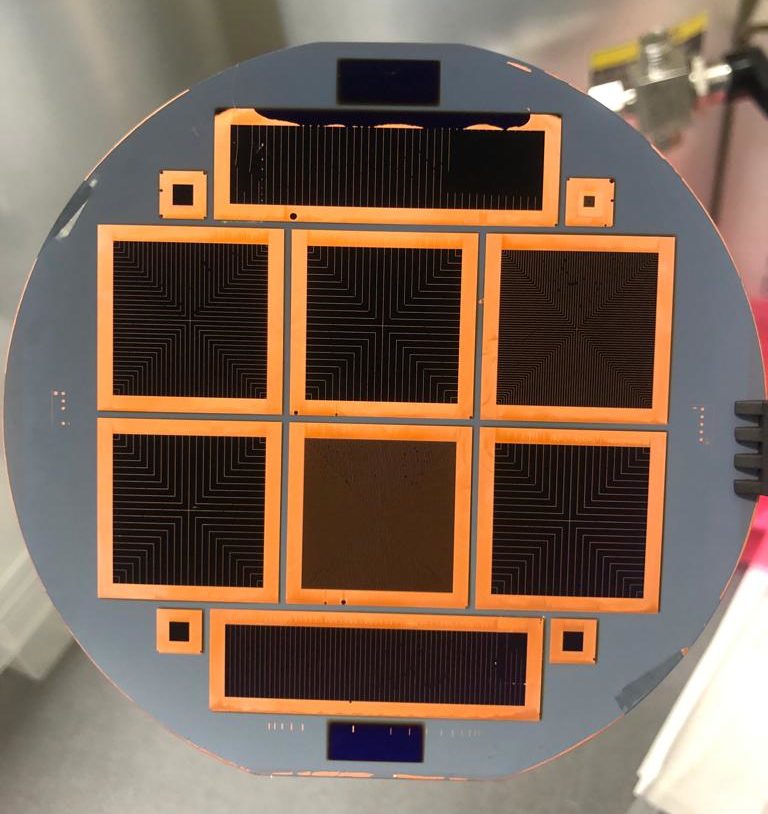Researchers from the Delft University of Technology in the Netherlands have fabricated a silicon heterojunction solar cell with a hole collector based on a molybdenum oxide (MoOx), which is a transition metal oxide (TMO) nanomaterial that has both novel nanoeffects and excellent semiconductor properties.
“Beyond the higher conversion efficiency obtained in our study, we have reached a deep understanding of the physical mechanisms that change the work function of MoOx layer during its growth,” researcher Olindo Isabella told pv magazine. “These mechanisms need to be balanced, primarily oxygen vacancies and dipole formation at the interface with silicon, in order to obtain a stable, ultra-thin MoOx layer that not only offers excellent transport properties for holes.”
The scientists built the cell with an n-type wafer on which they deposited a hydrogenated amorphous silicon ((i)a-Si:H) layer through a multi-chamber plasma-enhanced chemical vapor deposition (PECVD) tool. They used a front metal electrode consisting of electroplated copper (Cu) fingers at room temperature on top of a 200-nm-thick thermally evaporated silver (Ag) seed layer.
“The rear metal electrode was formed by 500-nm-thick thermally evaporated Ag. Finally, 100-nm-thick MgF2 was e-beam evaporated on the front side as an additional antireflection coating layer,” the scientists explained.
The team simulated the electrical properties of the cell by using the TCAD Sentaurus tool, which is a multidimensional simulator capable of simulating electrical, thermal, and optical characteristics of silicon-based and compound semiconductor devices. They found that the electronic properties of MoOx depend heavily on its oxidation states. They also discovered that, by fine-tuning the oxidation-reduction reaction between a substrate and MoOx, it is possible to adjust the working function of MoOx. films when their thickness is around 2 nm and their oxygen content increases.
The scientists also used PT (Plasma Treatment) and PTB (Plasma Treatment with Boron radicals) to gauge the presence of oxygen in the film and found these techniques offer a barrier to oxygen diffusion/reaction while providing for optimal electrical properties of the MoOx hole collector.
Popular content
“We observed that oxygen content in MoOx layers deposited after PT and PTB conditions is higher than that in MoOx layers deposited in noPT condition,” they said.
They were able to produce a solar cell with a MoOx layer with a thickness of 1.7 nm and the device achieved a power conversion efficiency of 23.83% and a fill factor of 82.18%.
“The certified efficiency is – to the best of our knowledge – the highest to date on this type of device,” added Isabella. “The previous record was previously certified by École polytechnique fédérale de Lausanne (EPFL) at 23.5%.”
The researchers presented the cell in “Achieving 23.83% conversion efficiency in silicon heterojunction solar cell with ultra-thin MoOx hole collector layer via tailoring (i)a-Si:H/MoOx interface,” which was recently published in Progress in Photovoltaics.
This content is protected by copyright and may not be reused. If you want to cooperate with us and would like to reuse some of our content, please contact: editors@pv-magazine.com.



By submitting this form you agree to pv magazine using your data for the purposes of publishing your comment.
Your personal data will only be disclosed or otherwise transmitted to third parties for the purposes of spam filtering or if this is necessary for technical maintenance of the website. Any other transfer to third parties will not take place unless this is justified on the basis of applicable data protection regulations or if pv magazine is legally obliged to do so.
You may revoke this consent at any time with effect for the future, in which case your personal data will be deleted immediately. Otherwise, your data will be deleted if pv magazine has processed your request or the purpose of data storage is fulfilled.
Further information on data privacy can be found in our Data Protection Policy.